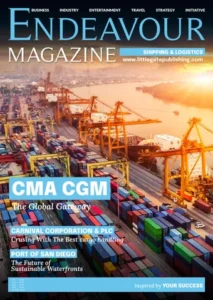Key Shipping Options from China to the United States
When considering shipping from China to the United States, you have several options. Each method serves different needs based on cost, speed, and the size of your shipment. Understanding these options can help you choose the best method for your needs.
Ocean Freight Overview
Ocean freight is a popular choice for shipping large volumes of goods. This method is cost-effective, especially for bulk shipments. You can select between Full Container Load (FCL) and Less than Container Load (LCL) shipping.
- FCL: This option is ideal if you have enough goods to fill a container. It offers better rates per unit due to lower overhead costs.
- LCL: If you have smaller shipments, LCL allows you to share container space with others. While it’s convenient, it may take longer and add handling costs.
Shipping times for ocean freight generally range from 15 to 45 days. Be mindful of delays due to customs and port congestion, which may affect your timeline.
Air Freight Overview
Air freight is the fastest option for shipping from China to the USA. It’s excellent for high-value or time-sensitive items. Delivery times usually range from 3 to 10 days. However, it’s more costly compared to ocean freight.
With air freight, you can expect:
- Speed: Get your products quickly, making it ideal for urgent orders.
- Reliability: Flights have set schedules, so you can plan for delivery with more certainty.
Consider this option if you need to minimize waiting time and can accommodate the higher shipping costs.
Express Shipping Services
Express shipping is available for those who need items even faster. It typically takes just 1 to 5 days for delivery. Services like FedEx, DHL, and UPS offer express shipping options.
Key points include:
- Cost: This method is more expensive but provides excellent speed.
- Tracking: Most express services come with real-time tracking, keeping you informed about your shipment’s status.
This option is great for urgent and smaller shipments, giving you peace of mind while your goods travel across the ocean.
Understanding Shipping Costs and Factors
Shipping costs from China to the United States can vary widely. Knowing how to estimate these costs and the factors that influence them will help you make informed decisions. Here is what you should consider.
Estimating Freight Costs
When estimating freight costs, you often encounter terms like FOB (Free on Board) and CIF (Cost, Insurance, and Freight). FOB means the seller covers costs until goods are on the shipping vessel. CIF includes costs for insurance and freight to the destination port.
Air Freight Rates are typically higher than shipping by sea but can be faster. You should always compare air freight costs and sea freight to determine what fits your budget and timing needs.
For a rough estimate, consider using online calculators from freight forwarders. These tools will need details about your cargo’s weight, volume, and destination.
Factors Impacting Pricing
Several factors impact shipping costs from China. The type of shipment—whether LCL (Less than Container Load) or FCL (Full Container Load)—can affect pricing significantly.
Shipping time is also crucial. Faster deliveries cost more. For example, air freight is quick but pricier, while sea freight takes longer but is often cheaper.
Your chosen freight forwarder can influence rates, too. Different forwarders may have varying connections and services, ensuring you get the best deal.
Fuel Surcharges and Additional Fees
Fuel surcharges can add to your shipping costs unexpectedly. They fluctuate based on global oil prices, so they may change throughout your shipping timeline.
Also, be aware of possible additional fees like handling charges, dock fees, and freight insurance. These can impact your budget significantly, so ask your freight forwarder for a complete cost breakdown.
Keep track of all these potential costs to avoid surprises and help manage your shipping budget effectively.
Shipping Times and Routes
When you are planning shipments from China to the United States, understanding the transit times and available shipping routes is crucial. This section covers typical transit times based on shipping methods, popular routes you might consider, and the effects of peak seasons on your shipping plans.
Typical Transit Times by Mode
Transit times can vary widely depending on your shipping method. Here’s a breakdown of common options:
- Air Freight: Takes about 1 to 5 days. It’s the fastest but usually the most expensive.
- Sea Freight: Typically takes 15 to 30 days. This method is economical for larger shipments.
- Express Shipping: Usually takes 3 to 7 days. It combines speed and cost-effectiveness, great for urgent deliveries.
Factors like weather conditions, customs clearance, and logistics can affect these times. Be sure to account for potential delays.
Popular Shipping Routes
Most shipments from China to the U.S. take one of several key routes. These routes include:
- Pacific Route: The most common, connecting major Chinese ports like Shanghai and Shenzhen to U.S. ports like Los Angeles and Seattle.
- Panama Canal Route: Useful for shipping from the East Coast of China to the East Coast of the U.S. It saves time by avoiding the long trip around South America.
- Transatlantic Route: Not as common but used for specific cargo types traveling through Europe.
Choosing the right route can help optimize your shipping time and cost.
Peak Seasons and Planning
Shipping can be affected by peak seasons, which often lead to increased demand and longer transit times. Key periods to consider include:
- Chinese New Year: Usually occurring in late January or early February. Many factories shut down, causing delays.
- Holiday Season: From October to December, demand spikes due to holiday shopping, leading to crowded shipping lanes.
To avoid delays, plan your shipments ahead of these peak seasons. Booking in advance can secure better rates and more reliable transit times. Keep an eye on natural disasters that could disrupt shipping routes.
How the Shipping Process Works
The shipping process from China to the United States involves several key steps that ensure your goods arrive safely and on time. Understanding these steps can help you manage your logistics effectively.
Selecting Suppliers and Coordinating Logistics
Choosing a reliable supplier is your first step. Alibaba is a popular platform where you can find various manufacturers. When selecting a supplier, check their reputation, product quality, and shipping options.
After choosing a supplier, you need to coordinate logistics. This includes deciding on the shipping method, such as air freight or sea freight. Air freight is faster but can be costly, while sea freight is more economical but takes longer. You should also confirm the delivery terms, which might be door-to-door shipping or port-to-port.
Shipment Tracking and Visibility
Once your order is shipped, tracking is crucial. Most logistics services provide tracking numbers that allow you to monitor your shipment’s progress. With this number, you can see where your package is at any given time.
Many companies offer online tracking systems. This lets you stay informed about any delays or issues. It’s wise to communicate regularly with your logistics provider to ensure you’re aware of any changes in the shipping schedule.
Warehousing and Storage Options
After your shipment arrives in the U.S., you may need warehousing options. Depending on your needs, you can choose to store products temporarily or longer-term.
Third-party logistics providers often offer warehousing services. They can help you manage inventory and fulfill orders efficiently. Consider the costs associated with storage and whether it fits your business plan. Having a good warehousing strategy can help reduce delays and streamline your shipping process.
Customs Clearance and Documentation
When shipping goods from China to the United States, you must understand customs clearance and necessary documentation to avoid delays and complications. Following the correct procedures helps ensure that your shipments arrive smoothly and on time.
Customs Procedures and Import Process
The customs clearance process starts when your goods arrive in the U.S. You or your customs broker will need to submit various documents to U.S. Customs and Border Protection (CBP).
Key steps include:
- Filing a customs entry: You need to report your goods and pay any applicable duties.
- Customs inspections: CBP may inspect your shipment. It can be random or based on specific risk factors.
- Release of goods: Once cleared, your shipment is ready for delivery.
Ensure you know the rules for your specific products, as different items may have varying requirements.
Required Shipping Documents
Several important documents are needed for successful customs clearance. Here’s a list of what you will typically need:
- Bill of Lading: This is a contract between you and the carrier, confirming shipment details.
- Commercial Invoice: This document describes the goods and includes their value.
- Packing List: This outlines the contents of your shipment, which helps CBP check what’s inside.
- Certificate of Origin: This shows where your goods were produced and can affect import duties.
Having all these documents ready will help smooth out the customs process.
Handling Import Duties and Taxes
When your goods enter the U.S., they may be subject to import duties and taxes. Understanding how these are calculated can save you money.
Consider these factors:
- Value of goods: This includes the price you paid plus shipping and insurance.
- Tariff classification: The specific code assigned to your product impacts duty rates.
- Incoterms: These terms dictate responsibilities for shipping and duty payment. Choosing DDP (Delivered Duty Paid) means the seller covers all costs until the goods reach you.
Being informed about duties and taxes helps you budget more accurately and avoid surprises.
Managing Risks and Insurance
When shipping from China to the United States, managing risks is crucial for a smooth process. Understanding the importance of freight and cargo insurance can help cover potential losses. Additionally, minimizing delays ensures your shipment arrives on time.
Freight and Cargo Insurance
Freight insurance protects you from financial loss if your goods are damaged or lost during transit. This coverage is vital, especially when shipping internationally.
Key benefits of cargo insurance include:
- Protection from theft: Safeguards against loss of goods during transport.
- Coverage for damages: Compensates for damage from rough handling or accidents.
- Natural disasters: Offers financial protection if shipments are affected by events like floods or earthquakes.
Always check the insurance policy details to ensure adequate coverage for your specific needs. Partnering with a reputable insurance provider can provide peace of mind during the shipping process.
Minimizing Delays and Disruptions
Delays in shipping can lead to increased costs and frustration. Here are some steps to minimize disruptions:
- Choose reliable partners: Work with established freight forwarders who understand the complexities of international shipping.
- Proper packaging: Use sturdy materials to protect goods from damage.
- Tracking shipments: Utilize real-time tracking solutions to stay updated on your cargo’s status.
Understanding customs regulations and preparing all necessary documents in advance will also help reduce potential hold-ups at the border. Taking these proactive measures can ensure a smoother shipping experience.






